Signaling
2017-11-03
Conceptual goals
- Understand that cell signaling is done through cascades of interactions and reactions
- Understand the basic mechanism of a G-protein signaling
Skill goals
- Reason about how perturbations to a G-protein signaling cascade would lead to different outcomes
How can you sense your environment and pass on the signal?
Olfactory sensory neurons detect odors in the environment
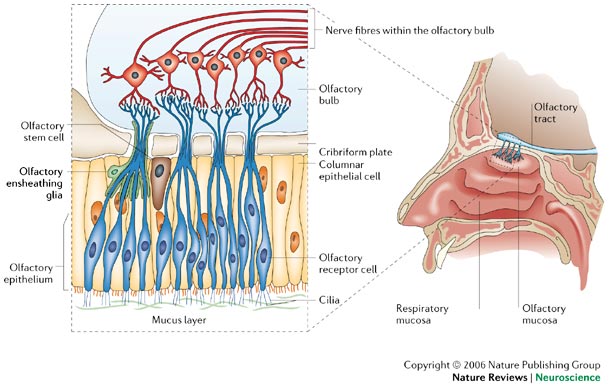
Human olfactory sensing is amazingly sensitive and flexible


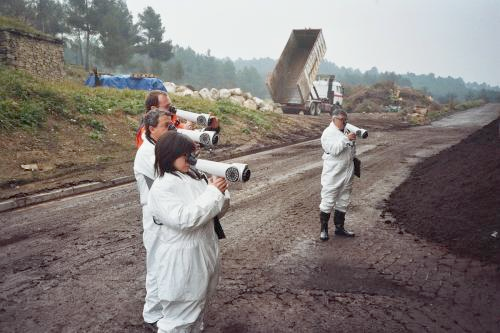
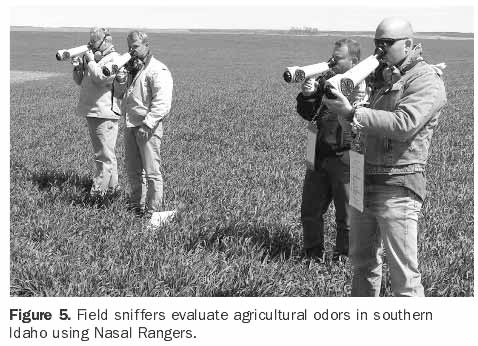
G-protein coupled receptors (GPCRs) are at the heart of olfactory signaling
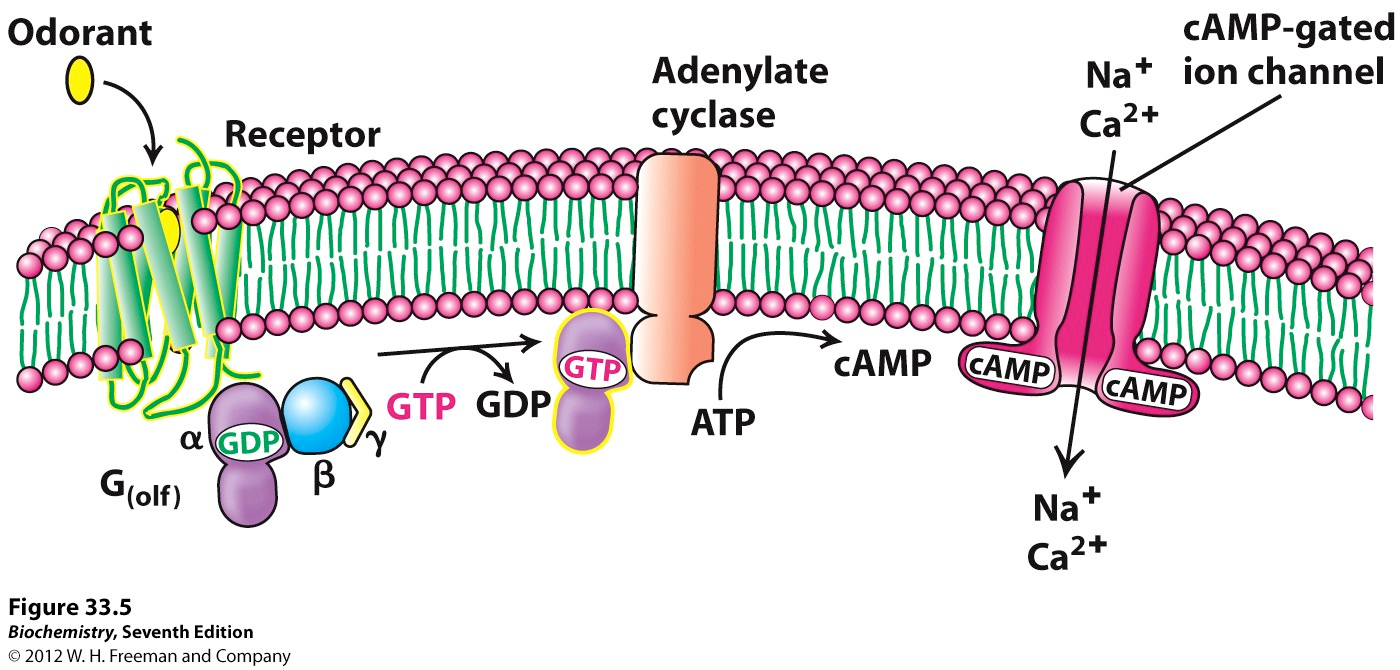
Each sensory neuron has one type of receptor and can recognize one smell

Steps
- Trigger signal
- Amplify signal
- Pass on signal
Steps
- Trigger signal
- Amplify signal
- Pass on signal
Trigger signal, players:
$GPCR$: G-Protein Coupled Receptor
$G$-protein (three subunits): $G_{\alpha}$, $G_{\beta}$, and $G_{\gamma}$
$GTP$: Guanosine triphosphate
$GDP$: Guanosine diphosphate
$GTP \rightarrow GDP + P_{i}$

guanosine triphosphate


phosphate + guanosine diphosphate
Initial state: $GPCR$ bound to $G \cdot GDP$ complex
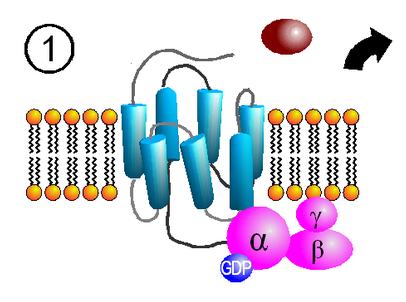
Odor molecule binds to $GPCR$, inducing conformational change in $GPCR$ and $G$-protein

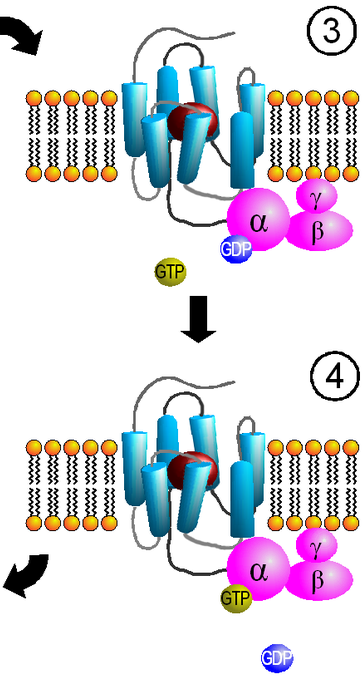
- $G_{\alpha}$ now has higher affinity for $GTP$ than $GDP$
- $G_{\alpha}$ drops $GDP$ and picks up $GTP$
$G_{\alpha} \cdot GTP$ has only weak affinity for $GPCR$ so it dissociates
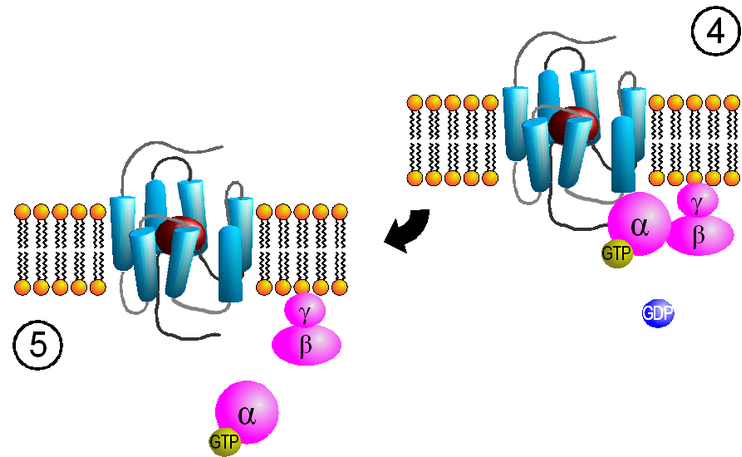
$G_{\alpha}$ slowly catalyzes $GTP \rightarrow GDP + P_{i}$
Meanwhile, the odor molecule diffuses away
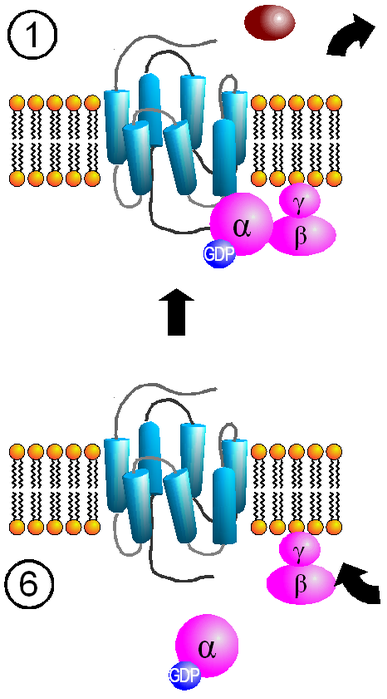
- $G_{\alpha} \cdot GDP$ has high affinity for $GPCR$ and binds
- system is now reset
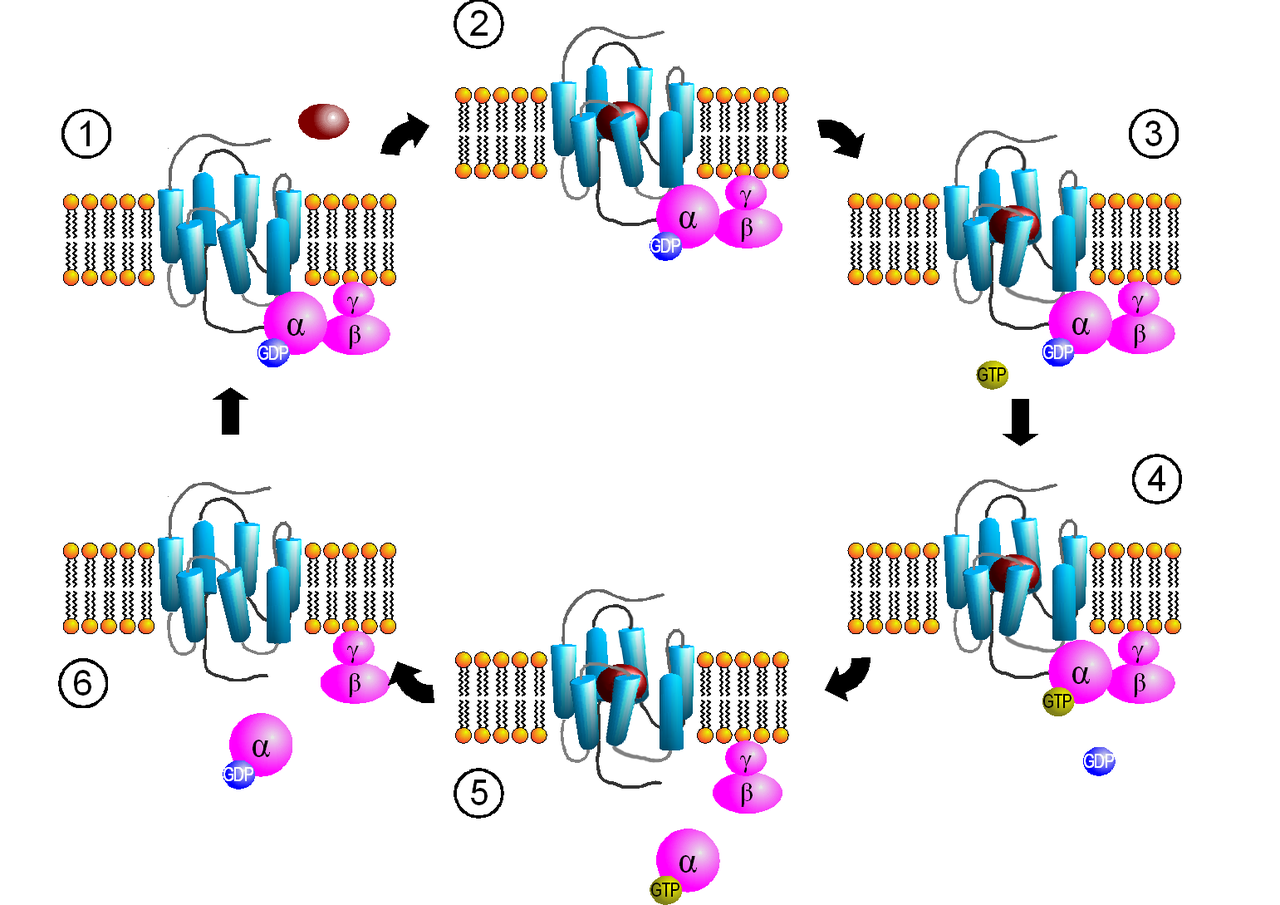
Steps
- Trigger signal
- Amplify signal
- Pass on signal
So what does $G_{\alpha} \cdot GTP$ do when it's wild and free in the cell?
$G_{\alpha} \cdot GTP$ allosterically activates adenylate cyclase
Adenylate cyclase starts catalyzing $ATP \rightarrow cAMP + PP_{i}$
$ATP \rightarrow cAMP$

adenosine triphosphate

cyclic adenosine monophosphate
$G_{\alpha} \cdot GTP$ activates adenylate cyclase, which makes a lot of $cAMP$

1 $G_{\alpha}$, many $cAMP$: amplification!
Steps
- Trigger signal
- Amplify signal
- Pass on signal
$cAMP$ binds to a gated $Na^{+}/Ca^{2+}$ channel, which opens and lets $Na^{+}$ rush into the cell

Gated ion channels respond to changes in electrical potential (voltage)

Gated ion channels respond to changes in electrical potential (voltage)
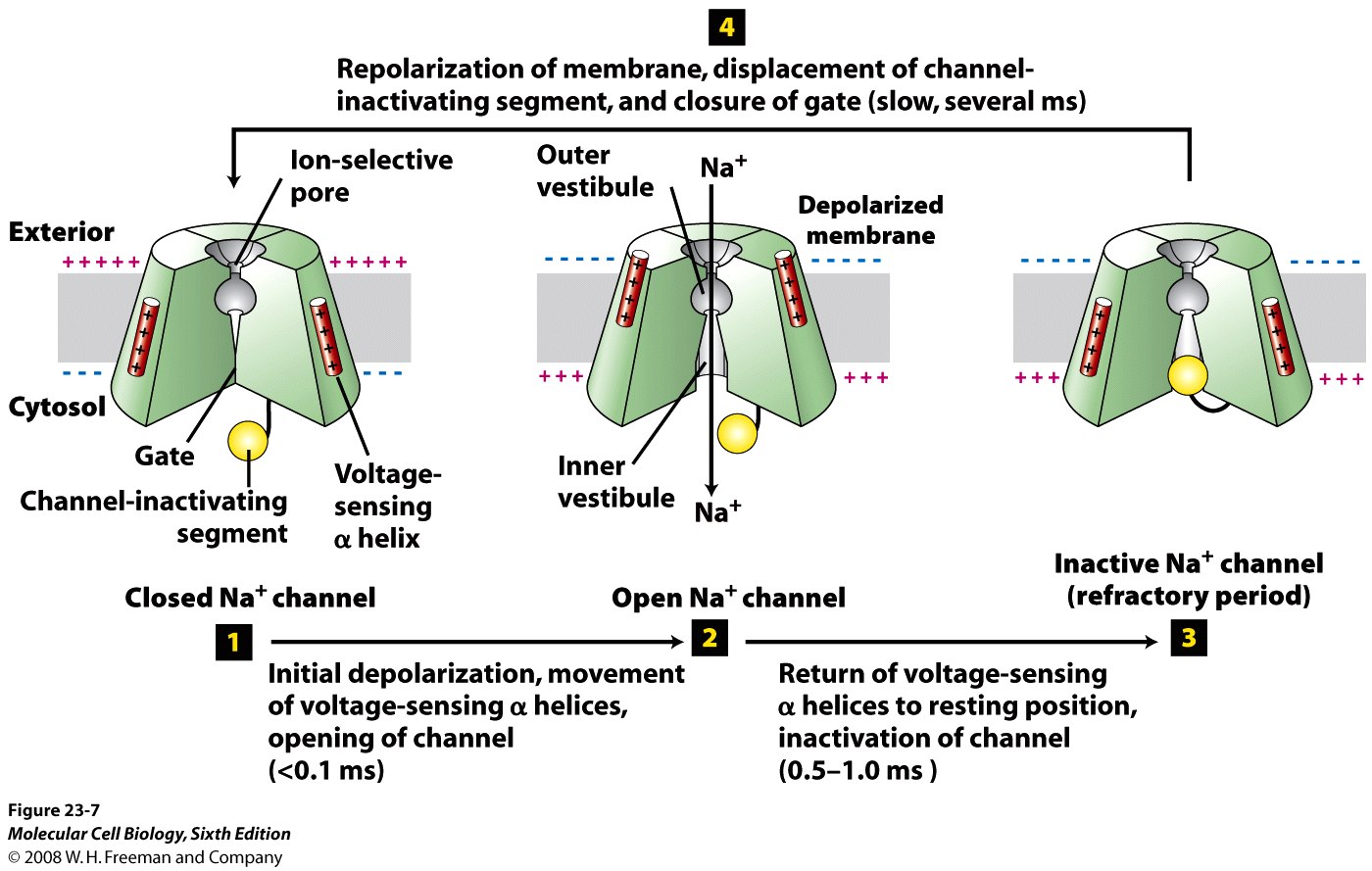
This depolarizes the membrane and kicks off a nerve impulse
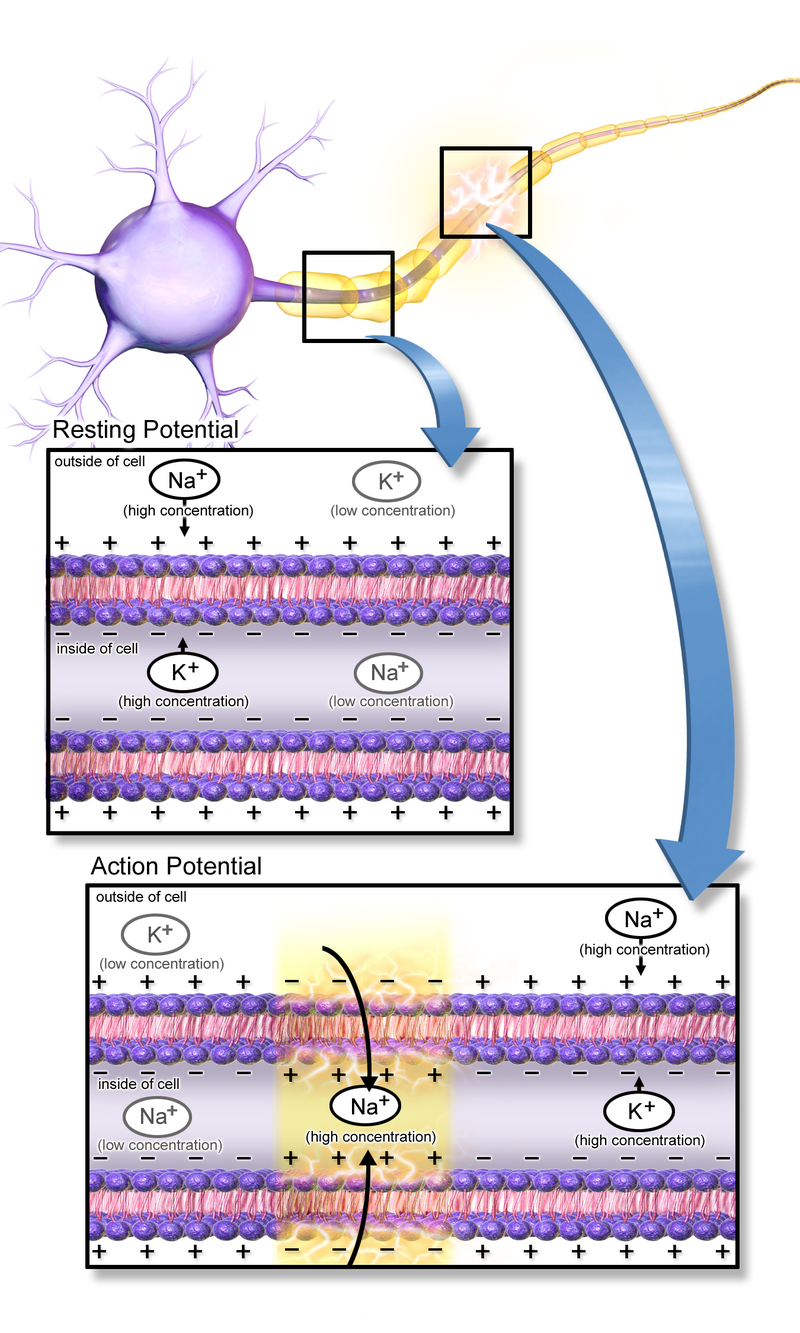
Steps
- Trigger signal: $GPCR$ and $G$ protein
- Amplify signal: adenylate cyclase, $cAMP$
- Pass on signal: $Na^{+}/Ca^{2+}$ channel
What would be the effect of a mutation to adenylate cyclase that makes it slower (lowers $V_{max}$)?

Trigger would be normal, less amplification, less transmission
What would be the effect of a mutation to $G_{\alpha}$ that slows its $GTP \rightarrow GDP$ activity (lowers $V_{max}$)?

Trigger would be on longer, more amplification, more transmission
What would be the effect of a mutation to the ion channel that lowered $cAMP$ affinity?

Trigger would be normal, normal amplification, less transmission
Why is it important that $G_{\alpha}$'s $GTP \rightarrow GDP$ activity is slow?

$GTP \rightarrow GDP$ is a timer that makes sure $cAMP$ is made, but not forever
Generality: these sorts of cascades are everywhere
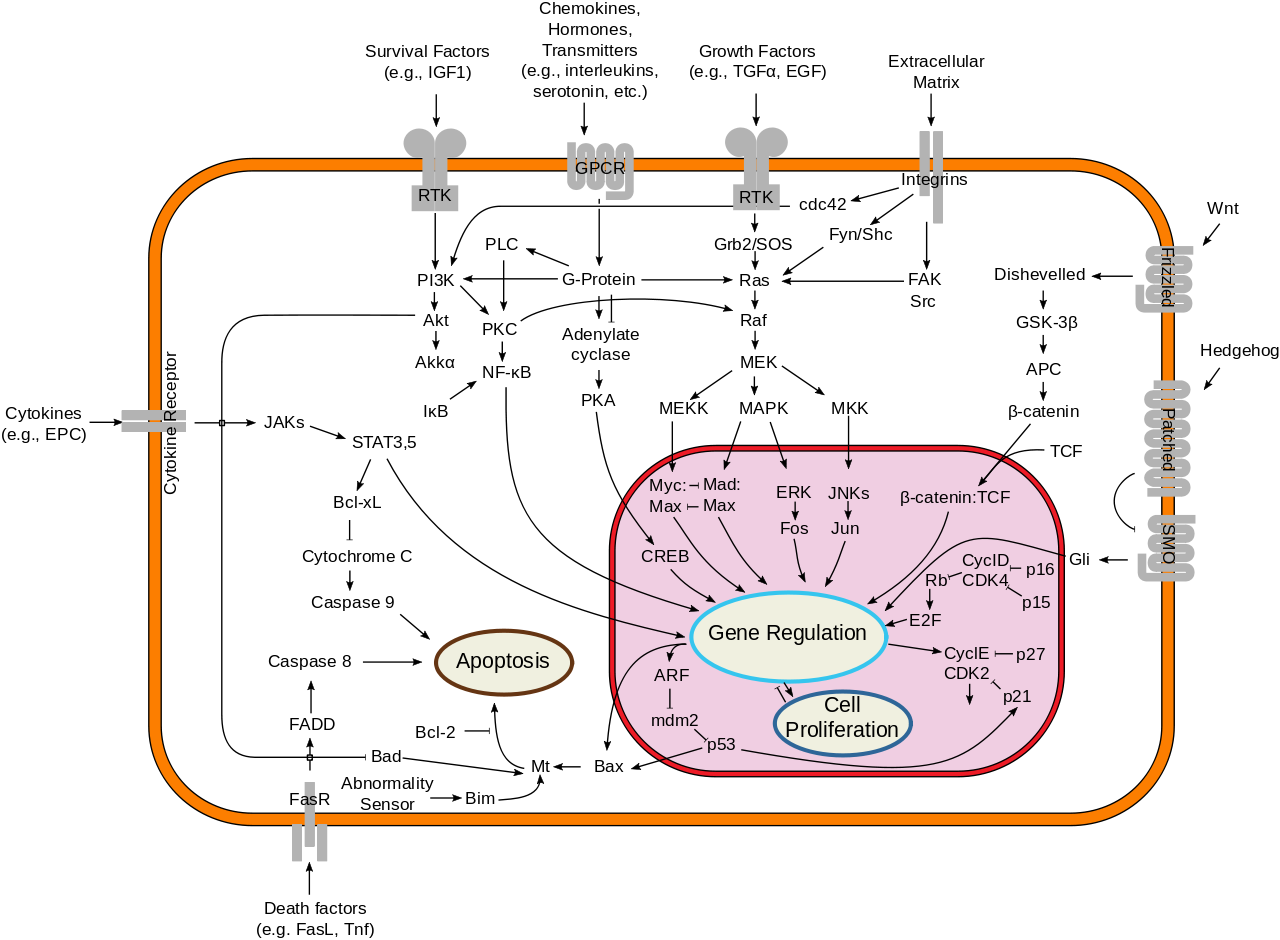 Arrow is "turns on." Flat arrow is "turns off."
Arrow is "turns on." Flat arrow is "turns off."
Such pathways construct "logic gates" and "circuits"

Big idea: sensing is usually arranged into cascades
Why might this be?
- Lots of points of regulation
- Small signals can be amplifed
- Makes system only turn on when it's supposed to
Summary
- Cells signal through cascades of interactions/reactions
- For olfactory signaling:
- Trigger signal: $GPCR$ and $G$ protein
- Amplify signal: adenylate cyclase, $cAMP$
- Pass on signal: $Na^{+}/Ca^{2+}$ channel